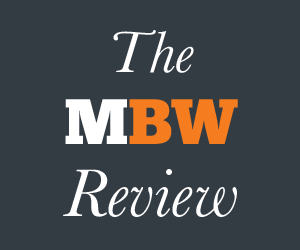
The MBW Review offers our take on some of the music biz’s biggest recent goings-on. This time, Glenn Peoples drills down into new, recently announced alterations which will affect the historic Billboard Hot 100 later this year. The MBW Review is supported by Instrumental.
In 2012, Harry Rodrigues, an underground DJ and producer who goes by the name Bauer, released a single via Jeffree’s – an imprint of Mad Decent, a dance label founded by ubiquitous DJ and producer Diplo.
For nearly a year the song toiled in near anonymity.
But, in 2013, something happened: a meme swept the United States as people uploaded videos of themselves dancing to the song.
In the matter of a week, a viral hit was born. The Harlem Shake was an internet sensation.
In February 2013, The Harlem Shake reached No.1 on the Billboard Hot 100 singles chart.
Its sudden popularity caused Billboard to quickly add YouTube streams to its chart methodology.
Suddenly, Bauer had one of those rare songs that transcends age, ethnicity, class, and geography.
Billboard’s chart was able to capture that swell of interest.
“The notion that a song has to sell in order to be a hit feels a little two or three years ago to me,” Bill Werde, Billboard’s then-Editorial Director, told the New York Times that year.
“The music business today – much to its credit – has started to learn that there are lots of different ways a song can be a hit, and lots of different ways that the business can benefit from it being a hit.”
Billboard decided that a stream on YouTube should be given the same weight on the Hot 100 as a stream on Spotify, Rhapsody, or other audio streaming services.
In doing so, it recognized that YouTube and social media help make hits.

When The Harlem Shake hit No.1 in the US, just 309,000 of its 103 million first-week streams came from audio services like Spotify.
The song was also helped by 262,000 downloads – driven by YouTube viewing, no doubt – but it got little help from a radio audience of just two million.
To exclude video streams from the Hot 100 would have ignored the public’s newfound ability to turn a song into a pop culture phenomenon almost overnight.
Five years later, Billboard has decided that a YouTube stream is no longer worth the same as a Spotify stream.
Starting in July, Billboard’s new weighting system for the Hot 100 will create a hierarchy that discriminates paid services from ad-supported services – and audio from video.
The Harlem Shake might not have reached No.1 if released in 2018.
This new scheme will work on a points basis:
- Streams from on-demand audio services – Spotify, Apple Music, et al – are given one point;
- On-demand video streams from YouTube, Vevo and others receive 0.67 points apiece;
- Finally, programmed streams by Internet radio services – non-interactive and limited functionality, meaning you can’t choose a song or listen to an entire album from start to finish – like Pandora and Slacker Radio are given 0.5 points each.
How will these changes play out?
I took 2017 US year-end numbers from BuzzAngle, estimated the total number of streams for each category above, and then calculated each category’s share of total annual streams.
Then I applied Billboard’s new point system to these 2017 numbers.
This is what the total market looks like before and after the new weighting scheme:

As you can see, across the entire 2017 US recorded music market, on-demand audio’s share of streaming points would jump from 40% to 53% under Billboard’s new rules.
The shares of ad-supported streams – Spotify Free, YouTube, et al – would drop from 32% to 28%.
Streams from audio programmed streams – Pandora, Slacker et al – fall from 29% to 19%.
The new methodology effectively imparts a 33% penalty on video streams and any viral hit is created on YouTube.
When “The Harlem Shake” hit #1 on the Hot 100, the song had 103 million YouTube streams and only 309,000 audio streams.
In the new point system, 103 million video streams will equal 77 million.
The Hot 100 did not incorporate Pandora data in 2013. But in the new methodology, any streams from ad-supported Pandora will count 50% less.

For my calculations I used information about Spotify and Pandora streams from their SEC filings in order to split subscription from ad-supported streams.
For Pandora all ad-supported streams were categorized as programmed; all Pandora Premium spins were classified as subscription.
For both Spotify and Pandora I estimated spins assuming an average song length of 3.5 minutes and four minutes of advertisements per hour.
And for both companies I conservatively estimated non-music content such as podcasts accounted for five percent of listening time.

The point system will further discriminate in 2019 when Billboard will make another change – splitting paid services into two groups.
At the top will be paid, on-demand services which offer unlimited access to a full catalog.
Paid services with “a partial music library and/or limited on-demand functionality” will be weighted less.
Radio play and track purchases will continue to be factored into chart calculations.
Billboard does not reveal how it weighs each format.
But as consumers buy fewer downloads – US track sales have dropped 58% from 2013 to 2017, according to the RIAA – streams will have a greater role in determining where a song is slotted on the Hot 100.
For its part, Billboard says it went through “exhaustive industry discussion and internal analysis” to arrive at its new weightings.
Its new approach reflects “a global push to measure streams in a revenue-reflective and access-based manner,” the publication wrote in its announcement.
Translation: the Hot 100 needs to reflect the idea that streams from different companies aren’t equally valuable.
It’s not that one stream is more impactful than others, or that one service forges a closer bond between the artist and listener.
The new methodology is about money. And YouTube – long-time target of music industry “value gap” accusations – is paying the price.
Coincidentally, YouTube is now launching its own charts – which track the most popular videos, most popular artists, and trending videos in 44 countries.
“The YouTube platform is a powerful source to gauge the popularity and velocity of a song or video,” Candice Morrissey, Head of Music Partnerships, EMEA at YouTube said in a statement.
When Billboard separates paid and ad-supported streams in its Hot 100 methodology, not every genre is going to be affected equally.
That’s not to say Billboard purposefully acted against any genre.
But changing the methodology is bound to have unintended consequences.
In addition to discriminating between platforms, the new chart calculations create a genre bias based on listeners’ preferred platforms.
Take Latin music as an example.
In 2017, Latin music accounted for 20.1% of all US-based video streams tracked by BuzzAngle. But Latin music was weak elsewhere, accounting for 4.8% of audio streams and 3.0% of digital track sales.
A Latin song that achieved a strong chart position would be weakened under the new Hot 100 rules, with a 33% decline in YouTube’s weighting.
Latin is also a strong genre at Pandora, accounting for 11% of music streamed (in 2016). Because Pandora’s ad-supported, programmed streams count for half a credit on the Hot 100, its streams will be at a disadvantage when tallying chart positions.
In contrast, rock songs will get a bump up. Rock is weakest in video – it accounts for 13.5% of streams, says BuzzAngle – but it ranks first and second in track sales and audio streams, respectively.
Rock is mostly a catalog genre at streaming services. But for the occasional rock song that rises up the Hot 100, being weak at YouTube and stronger at Apple Music will mean a favorable weighting.
A conversation about how people listen opens the door to a litany of philosophical questions about music in America.
What’s the value of a stream? When a person streams a recording, is the royalty more important than the connection the song makes with the listener? Is a stream on a playlist more valuable than a spin on an Internet radio service?
“Billboard is saying the music fans that count are those with credit cards,” YouTube told Music Business Worldwide.
Is one listen on an on-demand streaming service worth more than one stream from a non-interactive service?
Let’s assume a premium on-demand stream, from a playlist, has more value than a programmed stream.
What if the listener was streaming music while half asleep in a Lay-Z Boy chair? Wouldn’t that lean-back experience – literally leaning back – be equally valuable for the artist and label no matter the type of digital service?
Certain situations level the playing field.
Aside from royalties, what’s the difference between listening to a playlist and listening to a programmed (non-interactive) radio station while driving? If a playlist is played on shuffle, a person can listen to music without the slightest amount of interaction, awareness of the next song, or interest in skipping songs.
In effect, a playlist becomes a radio station in this scenario.
What’s more important: the royalty generated or the connection forged between artist and listener?
Let’s assume people who pay to stream are more engaged that people who don’t pay. They’re more active listeners, they follow music more closely than others, they’re more likely to buy music and attend live events. In fact, market research says exactly that.
People who subscribe to services and buy music are more valuable consumers than people who are less likely to pay for music. So, if measured by engagement, premium streams come out ahead of ad-supported streams.
Finding the right balance is a very tricky task. Billboard doesn’t if people are either engaged or passive when listening. It doesn’t have situational knowledge. All that can be known is the type of streaming service.
The music industry needs the Hot 100, an all-in-one chart that provides an accurate—if all goes well—snapshot of what people are hearing and buying.
The Hot 100 was based almost entirely on broadcast radio airplay when Billboard added digital track sales in 2005. On-demand audio streams were added in 2012.
Today, a chart must acknowledge the multitude of formats.
A methodology is just a best guess.
As Billboard might find, any methodology will encounter critics – and create conversation.
- Glenn Peoples worked on staff as a writer at Billboard from 2009 to 2016.





